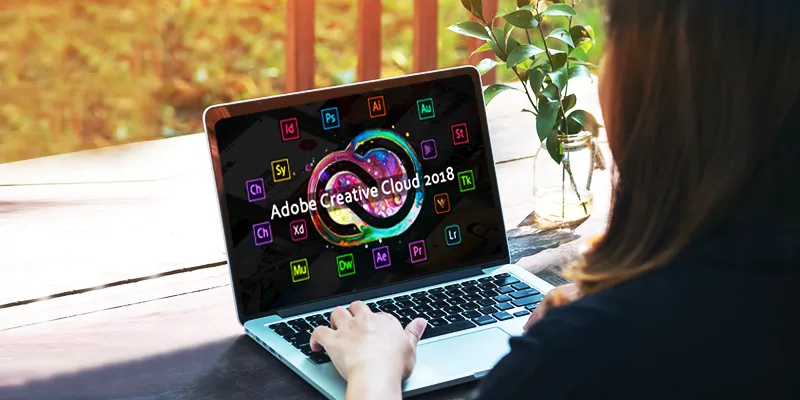How digital technology is driving a surge in graphic design software in 2018
The recent technological advancements have affected every single aspect of our daily lives. The graphic design field is no different. At the moment, graphic designers live in what we know as the “digital age” – a period characterized by a transition from analogue tools to digital ones. You can check out some of the best design tutorials online that can provide you with great insights and knowledge.

The impact of digital technologies
The availability of courses, tutorials, and training videos has impacted the field in a significant way. Before, you had to spend thousands of dollars on college to use the proper tools. Now, the most basic graphic designer can start off on their own, using nothing more than a PC and an internet connection. It’s a DIY world out there.
Unsurprisingly, graphic design is more popular than ever. According to statistics gathered by Brandon Gaille, more than 260,000 workers are now employed in the graphic design sector in the United States. While we don’t have any statistics on the matter, we can safely assume that the number is significantly higher on a global level.
While the industry is currently thriving mostly thanks to the Internet, some people would argue that the availability of digital software has also had a negative impact on designers, as the employers now have unrealistic expectations for the designers. Some of them need to have an almost superhuman work ethic in order to deliver their projects on time.
A recent survey conducted by Insource revealed that the volume of work and speed of work are number one and two concerns among creative professionals, including graphic designers. For that reason, the need for good and effective tools that allow you to do your work as quickly as possible is bigger than ever. For that reason, we’re going to talk about some of the best tools available on the market today.
Most of these are some of the more well-known names in the industry, however, we also have a couple of less-known ones too:
GIMP
The first tool on our list is possibly the most famous graphic design open-source tool out there. GIMP allows you to use a ton of features that could give some of the more costly tools on the market a run for their money. So if you’re working on a tight budget, this is the right tool for you.
GIMP allows you to fine-tune your images and even create remarkable art from simple images and photographs. Some of the more notable features include image enhancement, noise reduction, and fully-customizable brushes, among others. Additional features like image filters, Bezier curves, and a full animation package can benefit the advanced user greatly. The software comes with a good number of pre-installed plugins; however, some third-party plugins could be of use. However, some of them will cost you.
Adobe InDesign
The first Adobe tool we have on our list is mainly used in the creation and publication of digital and print documents. The desktop publishing tool allows you to design brochures, flyers, and even full magazines with ease. Most online magazines use InDesign to tweak their issues before publishing.
Of course, there are other possibilities with this tool. It also allows you to create PDF files as well as full eBooks filled with illustrations. You can easily collaborate with writers and publishers using this tool. This allows you to speed up the whole process and publish everything on time.
Pro users have access to the Creative Cloud Libraries, which allows them to save their work without worrying about their system crashing and leaving them without a project. If you want to spend less money, you can also buy a desktop version of the programme.
Blender
This software is mainly used for 3D animation, including apps, print models, and video games. The native-tracer allows you to render your designs quickly and make them look pretty realistic. Blender is actually pretty complex and it was originally developed with the help of numerous scientists and designers.
The standard version comes with great modelling tools that you can use to make, edit, and transform your models into 3D. Also, the tool enables you to import camera footage and track it in various 3D environments.
Blender has both a paid version and an open-source version. While the free version has a good number of features, it still is noticeably limited. If you want to use the full power of Blender, you should shell out $11 every month and speed up your workflow.
CorelDraw
Another popular design tool, CorelDraw is a feature-rich app that helps users create images from scratch, edit pre-existing photos, and do some web design work. The plethora of functionalities it has caters to a wide variety of sectors, including print, web, and art design.
If you want to have access to more useful tools, you should consider acquiring the complete CorelDraw Suite. It consists of the Font manager, Corel CONNECT, Corel PHOTO-PAINT, Corel Power Trace, Corel CAPTURE, and of course, CorelDraw.
The software is pretty user-friendly, so even if you don’t have too much graphic design experience, you’ll be able to learn how to use it in a couple of days. The software isn’t all that cheap – the full version costs more than $600 – however, you have a 30-day money-back guarantee.
Adobe Photoshop
You can’t really make a list of top graphic design tools without mentioning Photoshop. The most famous design software in the world is targeted at professional photographers, artists, and of course, designers. It allows you to design everything from posters and banners to websites and mobile apps.
Furthermore, Photoshop allows users to create illustrations, digital paintings, and 3D artworks, and subsequently enhance those using unique effects and patterns. The wide range of useful plugins and features will help you customize any piece of work you need.
Of course, the use of Photoshop will cost you. Fortunately, there are numerous pricing packages available. The cheapest one costs around $30, so with a little money, you’ll be able to utilize the power of Photoshop to enhance your work.
The bottom line on graphic design?
As you can see, the graphic design industry has come a long way in just two decades. All of the tools we listed above used to cost thousands of dollars. Now, you can use them for just a few dollars a month, or in some cases, completely free.
In the next couple of years, we can expect the market to develop even further. With new technologies emerging on an almost daily basis, it’s just a question of time before a new piece of software will appear and completely revolutionize the field.
Saurabh Hooda is the Co-founder of Hackr, an online platform that recommends the best online programming tutorials, design courses, and cooking recipes.
(Disclaimer: The views and opinions expressed in this article are those of the author and do not necessarily reflect the views of YourStory.)







